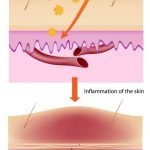Chronic Mood Disorders: Supporting the Process of Healing
Raina Lasse, ND
Healing doesn’t just happen to a patient, and it’s rarely a quick fix. As naturopathic doctors, we know that healing is a process that depends on involving the patient every step of the way. I call this “process-oriented healing.” When treating anxiety, depression, and insomnia, process-oriented healing is a helpful paradigm to keep in mind for both patients and practitioners. It reminds us that chronic disease is a dynamic process that takes time to heal and affects multiple systems.
For practitioners, using process-oriented healing means being present, helping patients stay engaged, and supporting the many stages of recovery. It is a shift in perspective that acknowledges that powerful changes in health actually occur during the journey.
The pillars of naturopathic medicine lay the foundation and structure for process-oriented healing. The clinical focus isn’t on the symptoms but rather on their root cause. Working towards treating the cause often requires a combination of curiosity, perseverance, skill, structure, and patience. This is especially true when addressing anxiety, depression, and insomnia.
Process-oriented healing isn’t limited to a particular branch of naturopathic medicine, such as functional medicine or homeopathy, but rather is applicable to all modalities. It is a way of looking at and supporting the patient’s health. It provides a road map for practitioner and patient alike.
Applying Process-Oriented Healing
The concept of process-oriented healing is straightforward, but the application can get tricky. The allure of quick and easy fixes is tempting. Remembering that these simple fixes have their place but don’t mark the end of a journey, allows us to maintain perspective and momentum towards a larger goal. Understanding and applying the concepts of internal resistance, palliation, and cure provides structure for process-oriented healing.
Early treatment of patients, when using process-oriented healing, is often focused on strengthening the therapeutic relationship, internal resistance, and palliation. Internal resistance is the body’s ability to adapt and adjust to the ever-changing terrain of life. Strong internal resistance allows a person to stay whole and connected amidst the chaos of living. It supports the body’s ability to cope and is intimately linked to an individual’s lifestyle, such as physical movement, sleep, stress management, daily detoxification, and diet.
Palliation is a therapy that provides relief only as long as the patient is actively using it. Palliation commonly works quickly but does not provide lasting results. The main benefit I find with palliation is creating temporary relief, establishing trust and connection with the patient, and rebuilding internal resistance.
The Road to Cure in Mood Disorders
Cure, on the other hand, means lasting benefits in the patient that are self-sustaining independent of continued therapeutic interventions. Treatment is often less about the presenting condition and more about the patient. I have found that cure is often multifactorial and requires curiosity, skill, patience, and a solid therapeutic relationship. The better I know my patients, the more accurate I am in supporting their evolving health. When addressing cure, it is a continual process of asking “why?” and “ok, what else?”
The onion analogy works well when addressing chronic mood disorders. There are many layers and many causative factors to attend to on the road to cure. I often start by addressing the biochemistry, anatomy, physiology, and an individual’s current life situation. Food allergies, adrenal dysfunction , impaired methylation pathways, immune system dysregulation (chronic infection/ autoimmune reactions), and basic lifestyle hygiene are common areas that need attention.
I am also curious about how predisposition, personal perspective, and patterns affect an individual’s health. Once I understand and know a patient better, I am able to see and understand the themes that take place in the person’s life and body. I use my training in homeopathy/miasms, flower essences, mindfulness counseling, and bit of cross-referenced intuition to support patients in this area.
When working with chronic disease, reestablishing health is a dynamic process. Being prepared by understanding the process of illness and health, cultivating a therapeutic relationship, and having solid clinical skills are essential on the journey.
I am continually reminded of the importance of supporting the process in creating sustainable change. Here are examples of 2 very different approaches: In the first example I am completely focused on the physiology of anxiety, at the expense of patient integration and participation. The second example is the converse – the primary therapeutic focus is on supporting the patient by integrating change and staying engaged.
Early in my practice, I learned about some fabulous remedies to reduce anxiety, and I was excited to use them. They worked great. In fact, they worked too well for some patients. There were a few patients that did not like how they felt on those remedies. Their physiology was supported and their anxiety was gone; however, its absence was also a concern. In these cases, I skipped the process, and that wound up not feeling right for these patients. Having their anxiety disappear actually created its own anxiety.
I have also worked with another group of patients, where the main therapeutic benefit I provided was keeping them focused and engaged in their healing process. They weren’t interested in using a lot of remedies, so I didn’t do a lot of prescribing. I listened to them, cared for them, and used motivational interviewing and mindfulness techniques. With that support, they stayed engaged and significantly improved.
Summary
I can’t stress enough the importance of an empowered therapeutic relationship. This allows the patient to be involved in the process of unwinding and understanding their mood disorder. Healing isn’t something that just happens to a patient, but rather something that they are actively involved in. The healing process needs to be truly assimilated by the patient for lasting results. Our role as healers is to help our patients stay involved in the process by providing needed tools and reflection.
Process-oriented healing is well suited for addressing anxiety, depression, and insomnia because it provides the framework and relationship required to truly treat chronic disease. As naturopathic doctors, we are equipped for the task of addressing cure. We are able to see that healing is a process. We establish and honor the therapeutic relationship that is created along the way. We know that the best results occur when we treat the patient, not their disease. Remembering that healing is a process, not a simple fix, keeps us centered on our naturopathic principles and our patients moving toward cure.
 Raina Lasse, ND, maintains a private practice in Portland, Oregon, specializing in chronic disease and motivational lifestyle counseling. Patients seek her care for autoimmune disease, digestive disorders, hypothyroidism, and mood disorders. Dr Lasse graduated from NCNM in 2006, and has been both owner and doctor at Red Leaf Clinic ever since. When she is not seeing patients, she is enjoying the natural wonders of the Pacific Northwest with her husband and son. You can learn more about her work at RedLeafClinic.com.
Raina Lasse, ND, maintains a private practice in Portland, Oregon, specializing in chronic disease and motivational lifestyle counseling. Patients seek her care for autoimmune disease, digestive disorders, hypothyroidism, and mood disorders. Dr Lasse graduated from NCNM in 2006, and has been both owner and doctor at Red Leaf Clinic ever since. When she is not seeing patients, she is enjoying the natural wonders of the Pacific Northwest with her husband and son. You can learn more about her work at RedLeafClinic.com.









